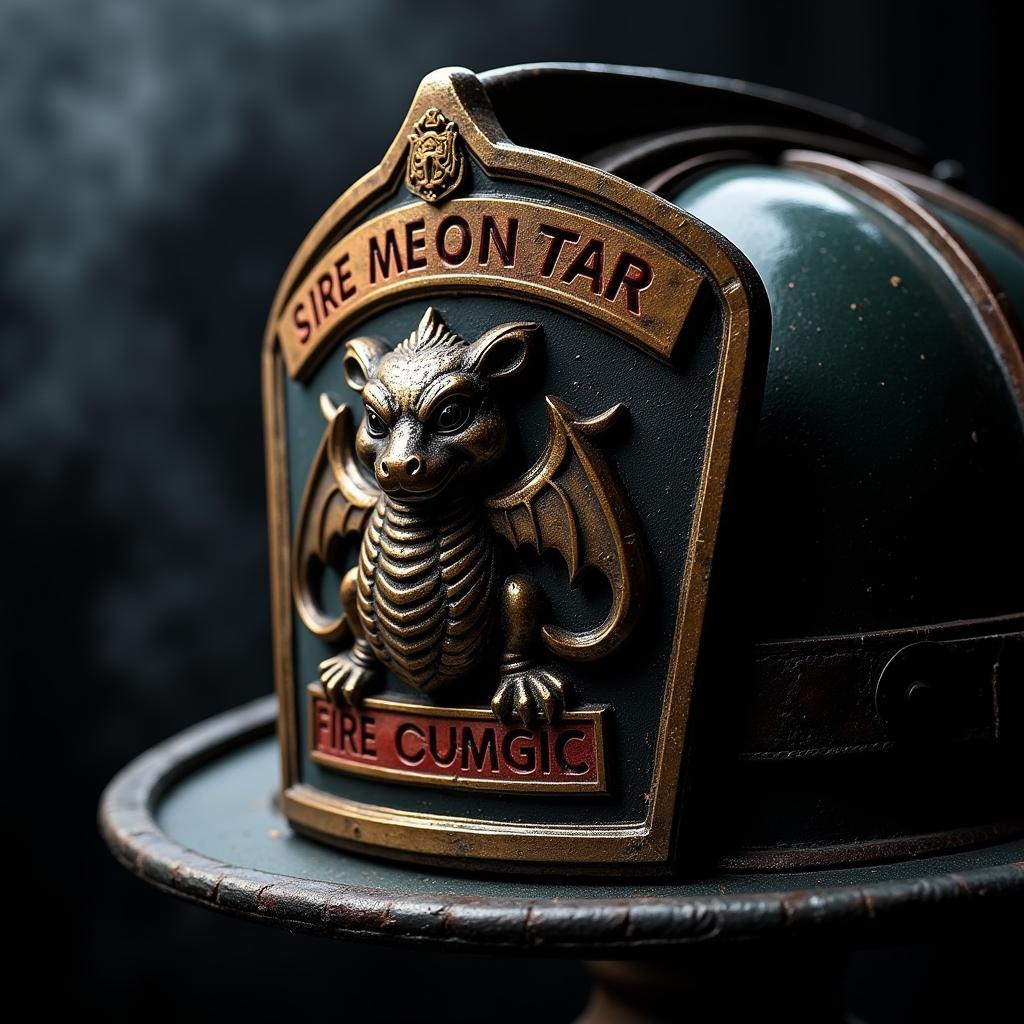Fahrenheit 451 Art: Exploring Dystopian Creativity
Fahrenheit 451 Art offers a captivating glimpse into a dystopian world where books are outlawed and firemen burn any they find. This unique artistic lens explores themes of censorship, rebellion, and the enduring power of knowledge, often through powerful symbolism and striking imagery. From fan art depicting iconic scenes to thought-provoking interpretations of the novel’s core message, Fahrenheit 451 art provides a platform for reflection and discussion on the importance of intellectual freedom.
The Visual Language of Rebellion: Deconstructing Fahrenheit 451 Art
Fahrenheit 451 art often utilizes a specific visual language to convey the novel’s complex themes. Fire, naturally, is a recurring motif, symbolizing both destruction and purification. The salamander, the firemen’s emblem, represents transformation and resilience, while books themselves become powerful symbols of forbidden knowledge and the human desire for intellectual freedom. Artists often depict these elements in stark contrast, highlighting the tension between conformity and individuality. Is it possible for art to truly capture the essence of Bradbury’s dystopian vision? Let’s delve deeper into the symbolism and explore how different artists have tackled this challenge.
Burning Bright: Fire and Destruction in Fahrenheit 451 Art
The image of burning books is arguably the most iconic visual associated with Fahrenheit 451. Artists often depict this act of destruction with a blend of horror and awe, capturing the unsettling beauty of the flames against the backdrop of a society losing its connection to knowledge. The flickering light and shadows serve as a metaphor for the struggle between ignorance and enlightenment. How do artists manage to convey the weight of this loss through visual mediums? They often use contrasting colors, juxtaposing the vibrant oranges and reds of the fire with the muted tones of the oppressed society.
 Fahrenheit 451 Burning Books Dystopian Art
Fahrenheit 451 Burning Books Dystopian Art
Many artists also focus on the emotional impact of censorship, portraying the anguish and despair of those who witness the destruction of knowledge. This emotional depth adds another layer of complexity to the artwork, inviting viewers to empathize with the characters and reflect on the consequences of intellectual repression.
The Salamander: Symbol of Transformation and Destruction
The salamander, chosen as the symbol of the firemen, adds another layer of symbolism to Fahrenheit 451 art. In mythology, salamanders are often associated with fire, adding to the visual connection between the firemen and their destructive duties. However, the salamander also represents transformation and resilience, perhaps hinting at the potential for change and rebirth even within a seemingly oppressive society. Some artists explore this duality, depicting the salamander not just as a symbol of destruction, but also as a representation of the potential for resistance and renewal.
 Fahrenheit 451 Salamander Fireman Symbol
Fahrenheit 451 Salamander Fireman Symbol
How do artists portray this duality? They may depict the salamander entwined with books, or morphing into a symbol of hope, suggesting that even in the darkest times, the potential for change exists. This nuanced approach to the salamander symbol adds a layer of depth and complexity to Fahrenheit 451 art.
The Power of the Written Word: Books as Symbols of Resistance
In the dystopian world of Fahrenheit 451, books become powerful symbols of resistance and hope. They represent forbidden knowledge, intellectual freedom, and the potential for individual growth. Artists often depict books as precious objects, highlighting their fragility and the desperate need to protect them from destruction. They might portray individuals secretly reading, clinging to books as a lifeline in a world devoid of intellectual stimulation. What visual techniques do artists employ to convey this powerful message? They often use light and shadow to highlight the importance of books, creating a sense of reverence and awe around these forbidden objects.
 Fahrenheit 451 Hidden Books Resistance Art
Fahrenheit 451 Hidden Books Resistance Art
“Fahrenheit 451 art often serves as a powerful reminder of the importance of intellectual freedom,” says Dr. Amelia Hayes, a renowned literary critic specializing in dystopian literature. “By visually representing the struggle against censorship, these artists encourage viewers to critically examine their own relationship with knowledge and information.”
Conclusion: Fahrenheit 451 Art and the Ongoing Fight for Intellectual Freedom
Fahrenheit 451 art provides a powerful and engaging platform for exploring the themes of censorship, rebellion, and the enduring power of knowledge. By visualizing Bradbury’s dystopian world, artists invite us to reflect on the importance of intellectual freedom and the dangers of unchecked authority. Fahrenheit 451 art serves as a stark reminder of the need to protect and cherish the power of the written word.
“Art inspired by Fahrenheit 451 transcends mere illustration; it acts as a catalyst for critical thought and conversation about the crucial role of literature and free expression in shaping society,” adds Professor David Chen, a leading expert in digital art and its social impact. The vibrant and evolving world of Fahrenheit 451 art continues to ignite discussions about the importance of intellectual freedom in our own world.
FAQ
- What are some common themes explored in Fahrenheit 451 art?
- How do artists use symbolism to convey the novel’s message?
- What are some examples of iconic imagery in Fahrenheit 451 art?
- How does Fahrenheit 451 art relate to contemporary issues of censorship?
- Where can I find more examples of Fahrenheit 451 art online?
- How does Fahrenheit 451 art inspire critical thinking about intellectual freedom?
- What is the significance of the salamander in Fahrenheit 451 art?
For assistance, contact us 24/7: Phone: 02462573573, Email: [email protected], or visit Savico Megamall, 7-9 Đ. Nguyễn Văn Linh, Gia Thụy, Long Biên, Hà Nội 10000, Việt Nam.





